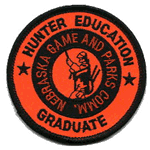Nebraska Game and Parks Commission

Nebraska Game and Parks Commission: Staff Research Publications
ORCID IDs
William L. Vodehnal http://orcid.org/0000-0002-8501-6727
Gregory L. Schenbeck http://orcid.org/0000-0001-9310-3786
Daniel W. Uresk http://orcid.org/0000-0001-8136-8648
Document Type
Article
Date of this Version
2020
Citation
Wildlife Society Bulletin 44(2):232–239; 2020;
DOI: 10.1002/wsb.1091
Abstract
We evaluated selection and availability of residual cover (dead standing herbage) by sharptailed grouse (Tympanuchus phasianellus) at time of nest‐site selection in an intact and annually grazed grassland. We used radiotelemetry in 1988–1990 to locate 147 nests in the sandhills of Nebraska, USA, and classified 121 as initial nests and 26 as renests. We used visual obstruction readings (VOR) to measure the height and density of residual cover at nests and 373 landscape‐scale transects around leks (trap sites). We excluded 77 nests from vegetation analysis because green herbage or early livestock grazing compromised residual cover measurements. Most females selected nest sites with residual cover, mostly warm‐season grasses, taller and denser than surrounding vegetation. Visual obstruction readings at 70 nests ( avg x = 7.1 cm, SE = 0.4, range = 1.0–19.0) averaged almost twice the VOR of residual cover within 12m of nests ( avg x = 4.0 cm, SE = 0.3, range = 0.9–11.8) and almost three times the landscape VOR ( avg x = 2.5 cm, SE = 0.1, range = 0.5–7.9). As further evidence of the importance of residual cover, >52% (n > 37) of the females (initial nests) in 1988 and 1989 completed egg‐laying and were incubating before green herbage began contributing to nest cover. More than 88% (n > 42) of the females relied on residual cover through egglaying in 1990 when annual drought delayed foliar development. Interested ranchers and land managers can enhance residual cover through livestock grazing management to attract females and presumably increase nest density, a key component of annual sharp‐tailed grouse productivity


Comments
US govt